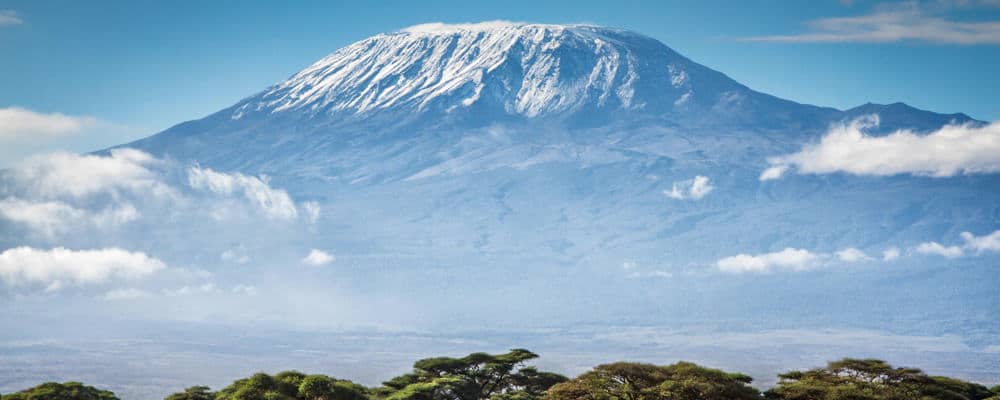Kilimanjaro established 1973 (officially opened in 1977),surface ares 756 square kilometre (above the 2700 m contour) and maximum length is 45km from the west to east.
An ecology cross –the section from equatorial heat to gleaming glaciers
As the continents highest peak,Mt Kilimanjaro is indisputably the king among the islands in the African sky.It is not only an awesome dormant volcano,but it is a spectacular and diverse showcase of the natural world as well.Within the short distance from the outskirts to the top of the mountain all aspects of life are transformed from lush tropical conditions to an icy lava desert,so that both hot summer and icy- old winter conditions are very phenomena.On the upper slopes,where health vegetation prevails,life has discovered its own exceptithe mouonal adaptations to the extreme natural conditions.Nothing is eternal,however,not even the huge glaciers coverings the top of mountain,and the Mt.Kilimanjaro is expected to lose its icy cap within a short period of time,perhaps,during the current decade.
Height 2700 (mandara)-5892 (Uhuru Peak,the highest point in Africa).The mountain is composed of three volcanoes:Kibo (5892 m) Mawenzi (
And the 5194 m) and Shira (3662 m)
There are seven established Mount Kilimanjaro routes, six routes up Kilimanjaro (Marangu, Machame, Umbwe, Rongai, Shira, Lemosho and Western Breach) and one down (Mweka). One of the ascent routes can also be used for descent (Marangu). Whichever Route you choose, climb slowly to allow your body to acclimatize and thereby maximize your chances of reaching the summit. To help avoid altitude sickness, allow a minimum of five nights, preferably even more for the climb. But most importantly, take your time and enjoy the beauty of the mountain.
When to climb Mt. Kilimanjaro
Can be climbed all year round. When deciding a date you may want to
consider average temperatures, humidity, precipitation, cloud cover, wind, traffic and moon phases.
Generally, the best times are the driest months of the year, especially January, February, August and September. Of course those are also the most crowded periods. The temperature on Kilimanjaro ranges from 20°C in the lowest zone, decreasing to -20°C on the summit.
TEMPERATURE:
Great altitudinal variation:variation:day time 16 – 20c,night time close to 0c at the lowest point of the park,mandara (2700 m).The Temperature then falls a degree centigrade for a very 200 metres of height.At an elevation of 3500m the direct sun is still burning hot,but there are frequent night frosts.Daytime temperatures on the summit of Kibo are around 0c and the night time temperatures below zero.
WHY VISIT KILIMANJARO:
• An astonishing and highly diverse natural phenomenon
• Closenesss to nature,thanks to reasonably good trekking facilities
• Marvelous scenery when hiking on the mountain.
• The highest mountain in Africa,a challenging hiking experience (oxygen content of the air on the of the mountain is 40% of that at sea level).
• An extremely popular park (tens of thousands of visitors a year).lots of hikers on the most popular marangu route all the year around,but relatively quiet on the less frequently used routes.
ACTIVITIES:
Guided hiking high up on the mountain,with marangu and machame as the most popular routes.Treks last 5 days or more.

